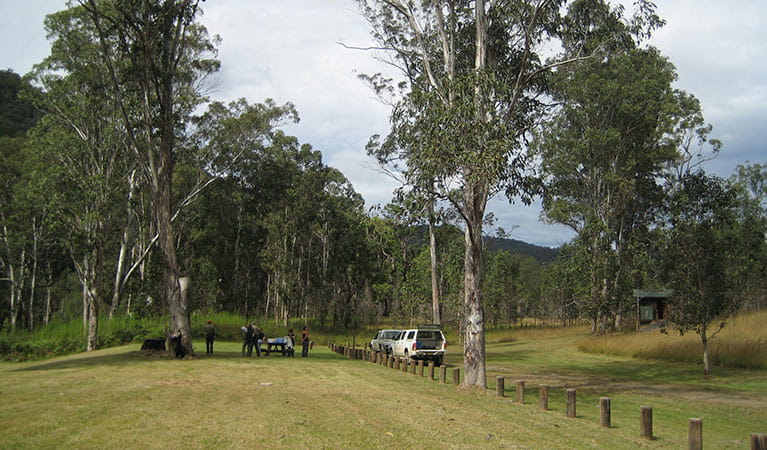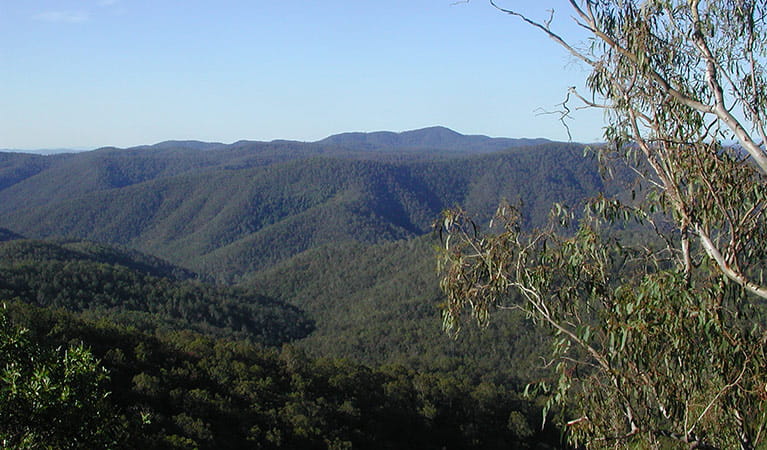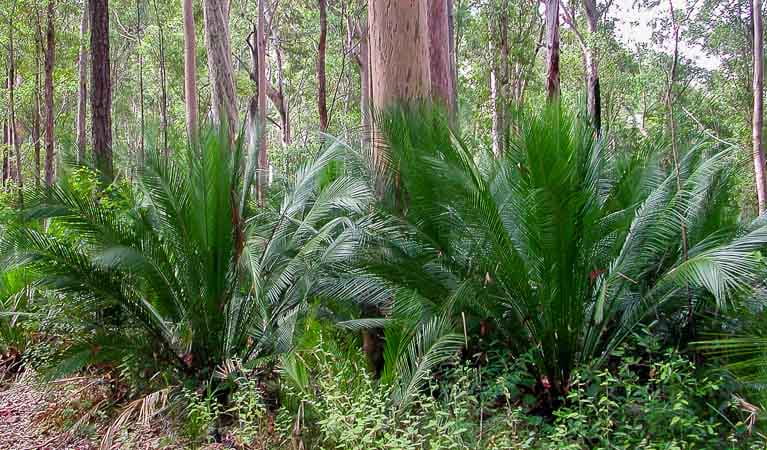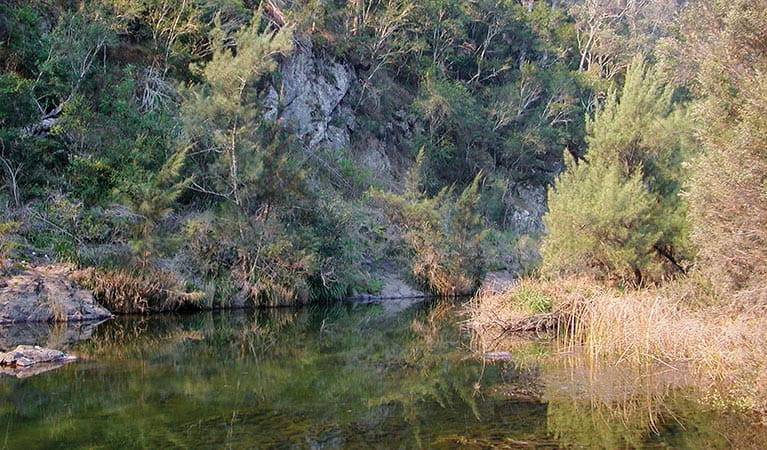Chaelundi National Park
Learn more
Learn more about why this park is special
Chaelundi National Park is a special place. Here are just some of the reasons why:
Waiting just for you

Fire trails twist and turn through scenery for mountain bikers to zip through, offering spectacular views to the river below. Crisp, fresh scents moisten the air on approaching a waterfall or creek. You can relax here with a cooling dip before heading to sizzle your sausages by the riverbank campsite. Car touring on forest roads outside the wilderness zone are ready for exploration by 4WD.
Mountain of gold

By 1872, there were over 500 people living in Dalmorton, working numerous gold reefs in the area. Evidence of this gold-mining history includes vertical and horizontal mine shafts of several abandoned gold mines. Mining finally ceased in the 1930s. There is also a long history of timber harvesting within the Chandlers Creek basin extending back to the late 1800s, with cedar-getting followed by logging of hoop pine up until 1930. Small shelters can still be found dotted along the landscape as remnants of the industry.
Living and thriving

The diverse forest environments and substantial old-growth sections make the Chaelundi National Park areas ecologically unique. The park harbours around 18 threatened animal species, including the rock wallaby, stuttering frog and regent honeyeater.
Ancient pathways

Chaelundi National Park lies within the territory of the Gumbaynggirr Aboriginal people. Many of the ridgelines within the park are considered to be of high cultural significance to local Aboriginal people as traditional travelling routes. Survey work of the Aboriginal cultural sites within the park has recorded scarred trees, a stone tool quarry and numerous open campsites and artefact scatters.